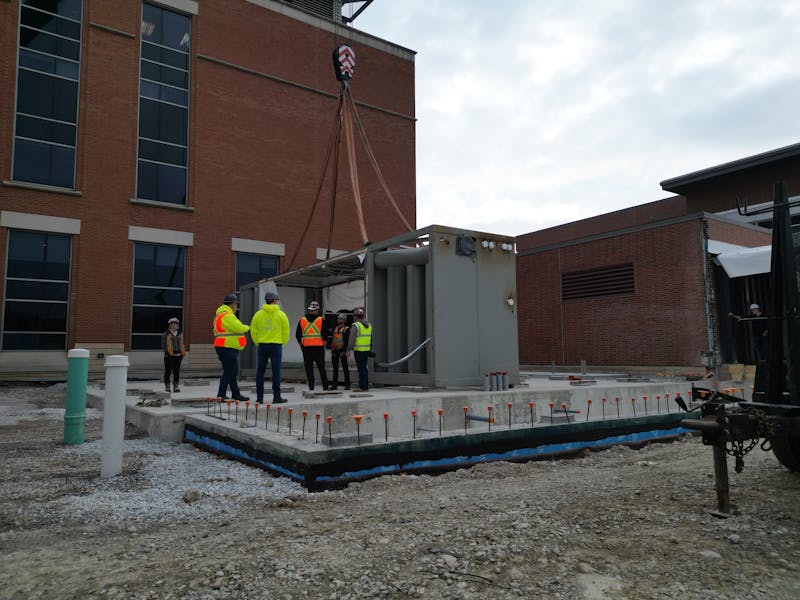
Modular construction is reshaping how healthcare organizations plan and deliver new facilities. Whether you’re developing a radiotherapy vault, expanding your proton therapy program, or adding general clinical spaces, following a structured process is key to success. Below are 10 steps to guide you through a smooth, efficient, and future-focused modular construction project.
1. Define Your Project Goals
One of the best ways to foster optimal collaboration and timely delivery is to articulate your vision and objectives. Keep the following in mind:
- Patient-Centric Outcomes: Identify how new spaces will enhance patient experience and care delivery.
- Program Requirements: Determine operational needs (equipment size, staff workflow, patient volume).
- Budget & Timeline: Establish financial and scheduling parameters from the outset to stay on track.
2. Choose a Specialized Modular Partner
Working with the right modular construction partner can make or break your project. According to the Modular Building Institute (MBI), partnering with an experienced modular firm is linked to fewer project delays and optimized outcomes. Here’s what we suggest:
- Look for providers like RAD, with proven expertise in medical-grade building
- Examine past case studies and client testimonials
- Partner with firms using patented shielding and other specialty solutions tailored to healthcare
3. Select & Assess the Site
Before finalizing your construction plans, evaluate the following:
- On-Campus vs. Off-Campus: Decide whether expanding your current facility or building in a new area aligns with patient access goals.
- Zoning & Permits: Investigate local regulations early to prevent unforeseen roadblocks.
- Utility Availability: Confirm that your selected site can accommodate your power, water, and waste management needs. This is especially crucial for advanced healthcare equipment.
4. Secure Financing
Healthcare facilities often require substantial capital, and smoother funding accelerates timelines. Your options may include the following:
- Operating Leases: RAD’s financing model bypasses lengthy capital requests, accelerating project schedules.
- Grants & Public Funding: Research government incentives for improving healthcare infrastructure.
- Private Partnerships: Collaborate with private investors or philanthropic organizations when applicable.
5. Collaborate on Design & Engineering
Make it your own! When you work with RAD, you’ll collaborate with our in-house architects, engineers, and outside equipment providers to shape your facility. We’ll design with the following in mind:
- Align interior layouts and customized floor plans to workflow and patient journey
- Incorporate modules that are upgradable, reconfigurable, or even removable
- Coordinate with manufacturers to ensure compliance with installation standards
6. Obtain Permits & Regulatory Approvals
Healthcare construction must meet rigorous standards to protect patient safety. Because of this, responsibility for permits is often split or shared between our team and the customer based on the project’s scope:
- New Modular Builds: We take responsibility for obtaining state modular approvals, which are typically handled by the modular builder.
- Relocated Existing Buildings: If a building was originally approved in a different state, we work with the local building department to function as the Authority Having Jurisdiction (AHJ).
You’ll also need to:
- Check local building codes to confirm alignment with structural, electrical, and HVAC regulations
- Ensure compliance with national and state health authorities for clinical spaces
- Maintain open communication with regulators and inspectors to prevent costly delays
7. Prepare the Site
While modules are assembled off-site, a well-prepared site is essential to ensure a smooth construction process. Our standard approach is for the customer to handle site prep, including hiring consultants to develop site construction documents and submitting them to the local building department for necessary permits. However, we can take on additional responsibilities—from providing guidance on foundation and utility design to delivering a complete foundation design—when requested.
This involves:
- Foundations & Utilities: Establish a solid base for each module and confirm all utility connections. Depending on the project's needs, we can offer input or fully manage the design.
- Site Logistics: Plan for the transport and placement of modules, factoring in crane access, staging areas, and efficient scheduling.
- Contingency Planning: Account for factors like weather conditions, site readiness, and potential shipping delays.
Regardless of scope division, the General Contractor (GC)—typically hired by the party responsible for site work—will usually apply for the permits with support from the Architect. Permit costs always rest with the customer and vary based on local regulations and project requirements.
8. Construct Modules in a Controlled Environment
Now, let’s look at how developing modules off-site in a specialized facility streamlines production and ensures consistent quality:
- Rigorous Quality Control: Each component undergoes careful testing and inspections before shipping.
- Accelerated Schedule: While your project site is prepared, modules are assembled in parallel—cutting overall build times by up to 50%.
- Eco-Conscious Approach: Off-site fabrication minimizes material waste and significantly reduces on-site disruption.
9. Deliver, Assemble & Commission
Once modules arrive on-site, we’ll piece it together seamlessly. Here’s how:
- Module Placement: Using cranes, modules are carefully set on foundations.
- Final Connections: Electrical, mechanical, and plumbing systems are tied into the main building.
- Inspection & Testing: Ensure each room and system meets healthcare operational standards before patients arrive.
10. Plan for Ongoing Maintenance & Upgrades
The beauty of modular construction is its inherent adaptability. You can:
- Easily remove and replace medical equipment with minimal downtime
- Scale up services by adding additional modules as needs grow
- Partner with your modular provider for regular maintenance, ensuring longevity and optimal performance
Build a More Efficient, Patient-Centric Future With Us
By following these 10 steps, you can experience the full benefits of modular construction, from accelerated timelines to flexible financing and scalable design. At RAD, our commitment to innovation and collaboration ensures your healthcare facility meets the highest standards of quality, sustainability, and patient care—all while staying on schedule and within budget.
Ready to streamline your next project? Let’s redefine how healthcare spaces are designed, built, and delivered. Contact us today to learn more!